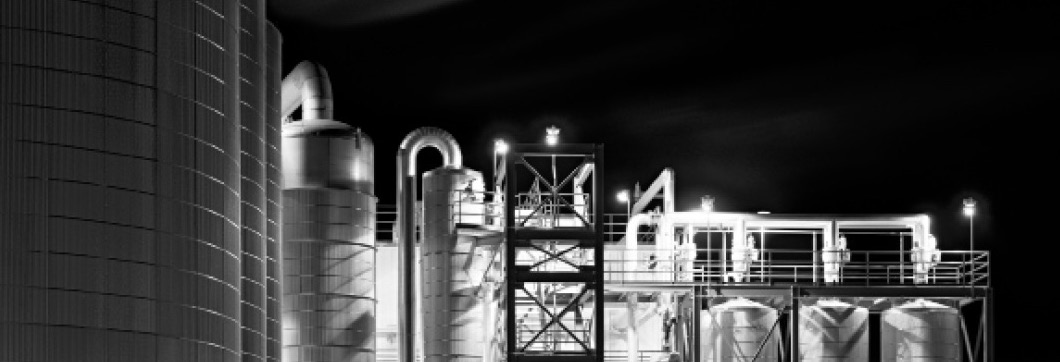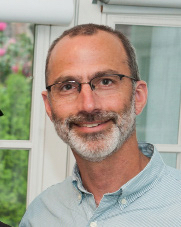A member of our editorial staff sat down with Mr. Ottenstein to discuss his thoughts on photographing the Midwest and how his process connects him to its places and people.
Omaña: How long have you been a photographer and what began your interest in that?
Ottenstein: Depending on how you define it, I have been a photographer for about forty years. It started when I was about fifteen and I really quickly discovered photography and I really quickly fell in love with it and just became fully immersed in it, and I have been ever since in somewhat different capacities. When I was fifteen and got started, I was selling photographs here and there, but I certainly wasn’t needing or trying to earn a living doing it. That started right after college when I graduated from Yale University in 1982. And I have remained completely and fully immersed in it since then.
Photography had a tremendous history rich in creative photo journalistic sort of work that was happening in the 50s, 60s and into the 70s that seems to have created a spark with a lot of people. And of course photography was becoming so much more accessible, so much easier as it continues to do so now with the digital. I just kind of happened to have fallen into all of that.
Omaña: I saw that you have a degree in American Studies, and I was wondering how your degree in that has influenced your photography. How has your interest in American history and culture had an impact on your photography?
Ottenstein Speaks: Why Iowa
The architectural landscape – the places where the built environment meets the natural landscape, or wherever one pursues the other – is changing dramatically in Iowa. New farming methods and technologies have rendered the traditional family farm obsolete. The result has been depopulation of rural areas and continual consolidation of farms. Fewer entities, operating with larger, more efficient modern machinery are accumulating larger tracts of land. As a result, farmsteads – groupings of traditional farmhouses, barns, silos, corn cribs and sheds – that populated the Iowa landscape are left empty and gradually disappear. Traditional grain elevators, the symbol of heartland America’s bountiful agricultural success, are also falling into disuse as multinational agricultural giants replace local facilities with huge, modern regional ones. Likewise, the proliferation of giant retail box stores has helped to decimate many small towns, already stressed by the diminishing farm population that had supported and, in turn, depended on local, family-owned shops. In short, the demise of the single-family farm culture has created discernible, physical changes to the architectural landscape. This is the subject of my Iowa photographs.
I first traveled to Iowa to explore issues of beauty amidst decay and the inevitable encroachment of nature back into the built environment as I had been doing with industrial subjects in the northeast. I discovered in Iowa that the traditional structures which symbolize a way of life, foreign to me as a lifelong resident of the metropolitan northeast, yet central to so many of the values that have informed and shaped Americans, are disappearing. They are being replaced by “corporate agriculture” and the all-too-familiar architecture of suburbia and modern retailing. My photographs explore, perhaps even celebrate, the inherent beauty in what remains of the architectural landscape we associate with the single-family farm and its way of life.
Ottenstein: It has had tremendous influence on it. My degree, to be very precise, was American Studies with a concentration in photography, so that I was very much concentrating on both—being a photographer and taking pictures as well as studying the work of other photographers—and the history of photography all as part of my major in American Studies
It turned out that the work that I was producing as a student and the project that I did as my senior project in American Studies, essentially became my portfolio as I started looking for work in commercial photography.
For quite a few years, I became almost totally immersed in making a living as a photographer, in doing commercial work, and therefore strayed considerably far from what I had been doing and studying as an undergrad, but eventually, I came back to that. So that in a sense, the work that I am doing now and the work that I started 11 years ago in Iowa really brings me right back to precisely what I was doing and studying and enjoying so much while I was earning my American Studies degree.
I’ll add that the project I did in Am St was a photographic essay and written text about the New Haven Harbor. I came from central Pennsylvania to New Haven and was astounded that a city could have such incredible resources: a body of water right in the city and yet New Haven pretty much ignored it. My project was about exploring through the photographic process, but also through an examination of NH history: how did that come to be? So, in a lot of ways, again, that was a model for what I ended up doing quite a few years later. Both, first photographing decaying industrial buildings in [this?] part of the country and then that actually led me to the Midwest—Iowa in particular—where I was photographing similar sorts of things. Again, I was exploring how the landscape came to look the way that it does: why is it this way? And that involved a lot more emphasis on the visual part of it and then gradually more and more learning and understanding.
Omaña: You have a lot a lot of landscapes, but you also have the buildings, trains, etc. How do you feel that you capture the essence of the Midwest in your photography?
Ottenstein: I suppose in a lot of ways I think that I photograph what interests and excites me. I believe—though I’d be hard presses to explain why or how that is—that my pictures, because they are well constructed, captivating to others, that they must describe something that I see. In fact, what I hope for is for them to describe what I see both visually and emotionally. If some of that does capture the essence of something, good. But I guess I just don’t think so much about trying to do that.
Omaña: When you take a specific photograph, what conditions lead you to take that picture? Do you have a specific shot in mind that you are searching for? Is it you just roaming around and then finding something and getting that?
Ottenstein: The latter. It’s rare, or maybe it just doesn’t even happen, that I’m looking to take a certain picture. I have a friend, another very good photographer, who has often talked about: putting another book together and he’s pulling pictures that he took here and there over the years and then he goes out because he has certain things that he needs to fill in. To me, that’s kind of a foreign way to think about it. Basically, for me it’s about roaming: I spend untold hours just on the gravel roads in Iowa wondering, maybe not even having any idea where I’m headed. I’ll go out and say “lets go north for a while” and then I’ll see an intersection and something will make me decide to turn left there. Sometimes I know I’m going somewhere: I need to be at such and such town by tonight, so I’ll start heading that direction. but really, I’m out there, to use a fishing analogy, trolling for pictures. I’m not looking for anything. There are certain pictures that “fit” into my classic definition of my Iowa photographs: the kinds of things I’m searching for, the kinds of things that I’m after. My radar is perked and watching for those sorts of things, but at the same time, I might see something completely different that has nothing to do with what I’m presumably looking for, but it interests me: like, “Wow, this is intriguing, I wonder how this will photograph.” So I’ll photograph those things too. So even while I’m out mostly looking for photographs that can be part of my Iowa project, and make sense in the book of the Iowa work, there will be multiple other things and ideas that I’m experimenting with, playing with also.
Omaña: You mentioned the classic Iowa photograph; how would you describe that?
Ottenstein: It would be black and white, not color. Certainly, the nighttime shot of the grain elevator along the railroad tracks, black and white. And the old school house with the brown bales of hay behind it, and the road, and basically open flowing fields. Now, there’s one of the side of a chicken coop with a kind of dramatic sky. That was actually Kansas, but it certainly could have been Iowa and certainly fits in that category. I guess what I would tend to describe as most of my classical Iowa images, they tend to be—but they’re not exclusively—of structures, and they tend to be old and generally speaking, unused structures. Whether that’s a farm house, or a church, or a grain elevator, or a cornfield. But often, it is not just the picture of the structure, but of the structure in its landscape. Sometimes that means that it’s a building that’s very small in a large landscape, but sometimes not at all. Sometimes it’s just a hint of what that landscape really is, but enough of a hint or suggestion that, to me anyway, it is a building in its landscape. You asked a question about what makes me select something and not something else: well, I might, for instance, see this old farmhouse that hasn’t been lived in for 25 years. There’s a really good chance that I’ll hit my brakes when I notice that and back up if I’ve already started to pass it or just make sure I’m looking at it. But where I stop has a whole lot to do with where and how the farmhouse is situated. And it’s both an artistic decision, which you know, also by the way has a whole lot to do with what the light is that day. It may be a house that on another day, with the right light, I would be all over it. But some days the light just doesn’t call me, doesn’t get me excited to take a photograph of it.
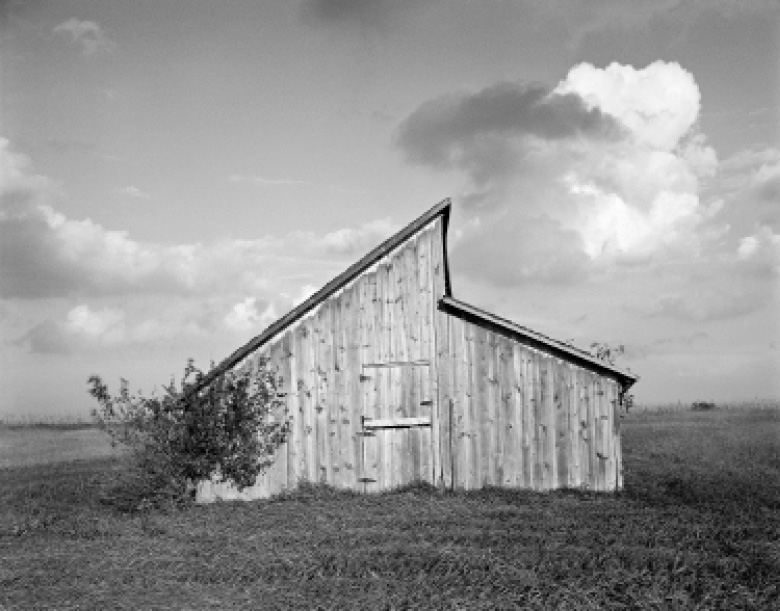
Photograph: David Ottenstein
Omaña: Taking a look at the pictures that we have here, I’ve noticed that there are few during the winter time. What seasons were these taken? Why then?
Ottenstein: I have taken a number of pictures of Iowa in the winter when there is lots of snow on the ground and in the winter when it was just sort of down and cold. I think I’ve been photographing in Iowa every season. I’m wondering right now if I’ve ever been there in February… maybe not. But I’ve been there in just about every other month. Early on, my choice of when to come had way less to do with “when is the best time to be in Iowa photographing” than with “When could I get away for 4-8 weeks at a time”. After a while, I started to realize how important it would be to be there during all the different seasons. I also discovered that being there around harvest time is really cool. There’s so much happening—the big machinery… So i tend to be there a lot during the fall. But, like I said, it’s important to see it in all different types of year because you know, when the corn is ten feet high, for one thing, a lot of your views are blocked and there’s a lot that you can’t see or access. It varies a lot, but I look for that variation.

Photograph: David Ottenstein
Omaña: Have you ever photographed the same place/area during different seasons to see and mark those changes in your work?
Ottenstein: Yes, there are some places. Grinnell is sort of my base out there, almost like a second home for me. There’s a farm outside of Grinnell where I usually stay and I have photographed a lot in that area. There is a spot that I really like in the southern part of Tama County and I go there frequently, and I have photographs of the same thing over and over again in different light; different times of year; different everything. There are a number of places like that. And then, because I’m often based in Grinnell, the counties around there are areas that I travel over and over and over again. So, there are a lot of places that I have photographed repeatedly. Sometimes intentionally, other times not even realizing that I took that before because it just looks so different now. Since I started eleven years ago, so much of what I have photographed isn’t there anymore, and sometimes I realize that I’m so familiar with a particular spot that if the barn is gone next time I go there, I know that. But there are plenty of places that once the structure is gone, and all evidence of it has been removed—which is usually what happens rather fast. There is just so much I don’t know; not even enough to realize “Wow, this is that spot!” And then there are times when I’m driving along the road looking at a map and I see the name of some old town that doesn’t sound familiar and I don’t think I’ve been there, so I figure I’ll head to that town. And then I get there and realize, “Oh! I have been here; I have photographed this”—that happens a lot. There are something like 1000 named towns in the state of Iowa. I could be in a town, or really just out there somewhere and all of a sudden it will come to me: “I remember that building, I sat there in 2007.” The more time I spend in Iowa and the more that my subject matter disappears, the harder it is, the more time I might spend driving before I stop to take another picture. That’s in part because there’s not as much.. There aren’t as many of those abandoned buildings and wonderful old relics anymore. But also, because I have photographed so much… Even things that I haven’t seen just may not feel “new” or interesting enough for me to stop and photograph.
Omaña: Are there any artists whose work you admire, follow and appreciate that you would like to clue our readers into?
Ottenstein: Yes. David Plowden—I’m envious of him. He’s my father’s age. He has been photographing in the Midwest (in many of the same places that I’ve photographed), but he’s been doing it since the early 1960s. I’m envious that he’s had an opportunity to photograph the landscape of the single-family farm in the Midwest since it was a vital, functioning entity. And he has continued to photograph it in its decline and its demise. I came in kind of late; I missed that point.
And Walker Evans—photographing in the 1930s, 40s and beyond. He had been a professor of photography at Yale, but I got there about 5 years after he died. But his work there had a hard presence and I’ve just always admired his work.
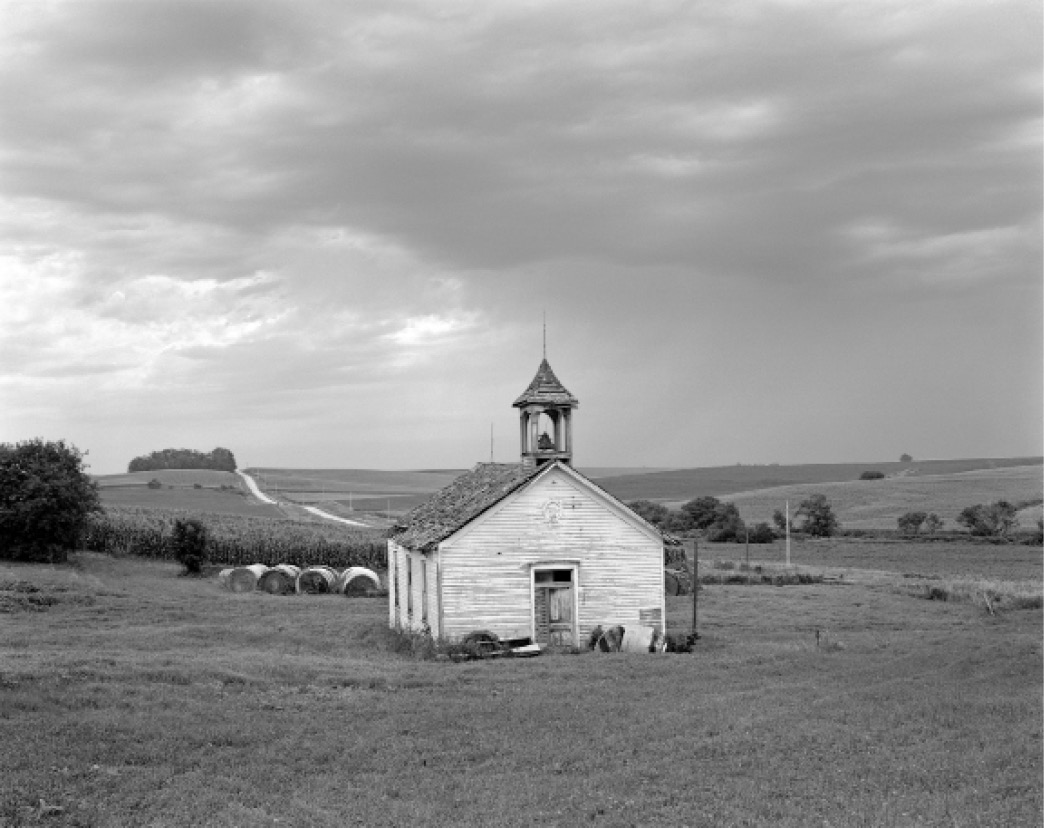
Photograph: David Ottenstein
Omaña: What would you say are some of the more unusual experiences that you’ve had while shooting in the Midwest prairie region, Iowa, or anywhere, really?
Ottenstein: There are all kinds of interesting stories that I can tell you. My favorites would have to do not so much with what I’m photographing, but with the people I meet along the way. There’s a story I like to tell
I stopped somewhere. I saw a farmstead up on the hill and the hillside with an old fence on it. It was really interesting-looking to me, and I wanted to photograph it. So I went to the farmhouse, knocked on the door and there was nobody there. I was standing in front wondering what to do: “Do I shoot anyway? Do I just move on?” Then, way down the road there was a big pick-up truck coming and I thought: “Maybe it’ll pull in here.” Sure enough, it did. The guy pulled up, and as is often the case, there was a bit of a rather “rough” quality like, “Can I help you with something?” (*in deep voice*) And I explained; I usually tell people my name; that I’m a photographer from Connecticut; I’m photographing the farm landscape of Iowa. He told me that this was his brother’s property, but that I am absolutely welcome to go ahead and photograph; that if his brother came by, just to tell him I said it was okay for you to photograph here. He drove off and I took my pictures. Fifteen or twenty minutes later, he came back because he thought of a barn ten miles away that I might be really interested in photographing. So he went completely out of his way to come back and tell me that. I was very impressed by that. That sort of thing happens frequently.
There’s a picture: a nighttime photograph of an ethanol plant. That is an ethanol plant in Iowa Falls. The first time I was there photographing (and that picture is from one of those first sessions), it was late at night when I was there working. I was doing a very long exposure pictures of working with 4x5 film. Anyway, there was a truck driver who was delivering a tank load of the poison that they add to the ethanol so that people won’t want to drink it, and it takes quite a while (forty-five minutes—an hour) to pump all of the contents from his tanker truck. While he was hanging out we began talking, and he was interested in photography so I told him about what I was doing. Then I was taking a picture of the plant and you could see against the dark sky that there was a lot of steam, but in my picture, it just wasn’t showing up. What I realized I needed was a good, strong, bright light shining onto the steam. I mentioned that to him, and he said: “oh, well I can move my truck. I have this big beam, spotlight-thing on there.” I said: “You know, once we do that, it’s going to take a while since exposures are long. So he went to ask his wife since they still had about an hour drive home. Anyway, he was all for that. He had to keep moving and maneuvering his truck because the floodlight was designed to face down as opposed to up. He eventually got the floodlight to the ceiling where I wanted it, and it made the photograph work. Again, it’s all about the people I encounter and the process.
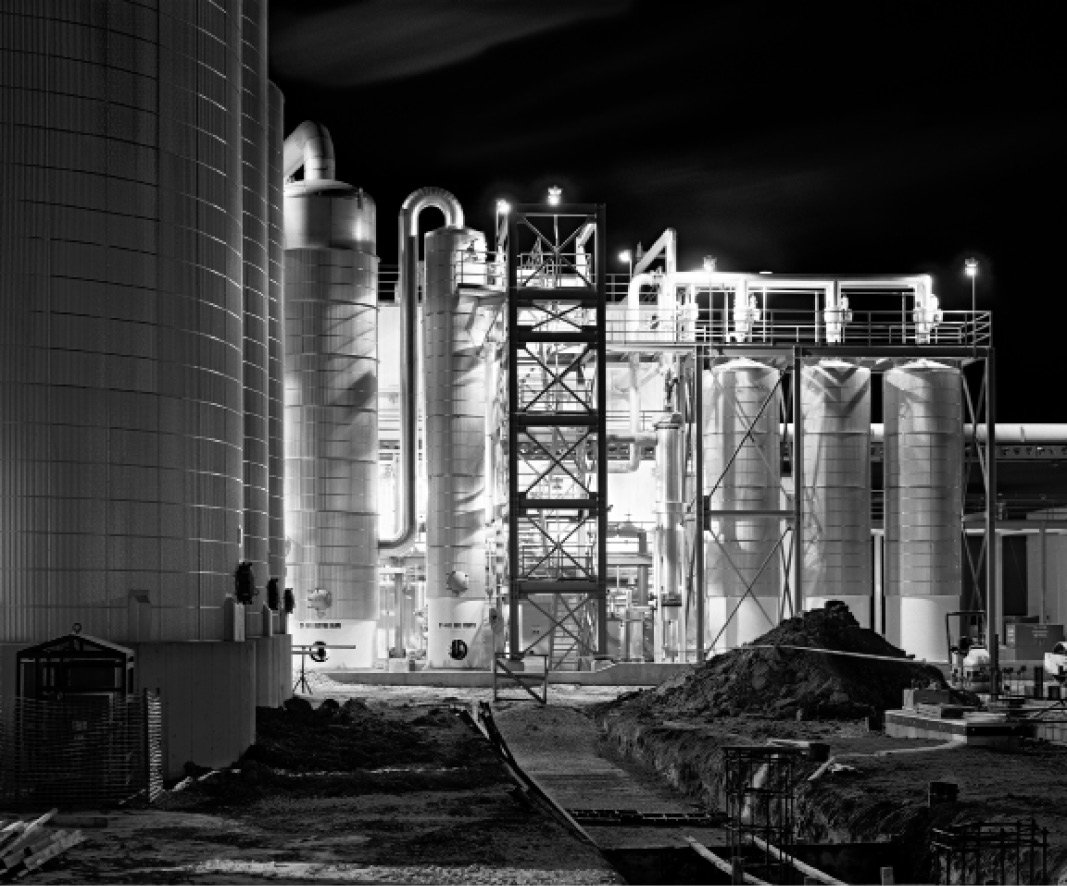
Photograph: David Ottenstein
